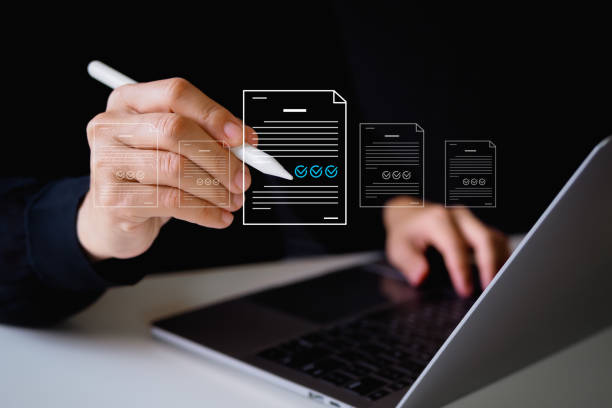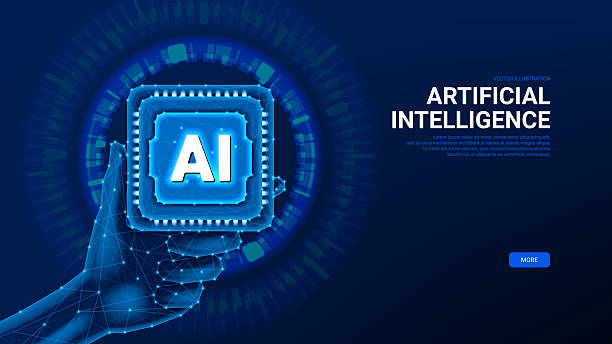Definition and Importance of On-Page SEO in Website Optimization
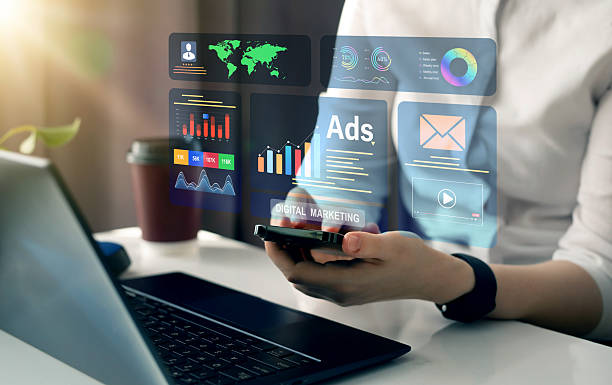
In today’s highly competitive world, a strong online presence is vital for any business.
One of the most important pillars of this presence is #On-Page_SEO or on-page optimization.
This process includes a set of actions performed within your website to improve its ranking in search engine results and attract more #organic_traffic.
On-page SEO not only helps #search_engines better understand your content but also significantly enhances the #user_experience for visitors.
In fact, the main goal of on-page SEO is to create high-quality content with a standard structure that is understandable and appealing to both users and search engine robots.
The importance of this type of optimization cannot be overlooked, as even with powerful backlinks, if your internal content is not structured and optimized, achieving high rankings in Google will be difficult.
This section serves as an educational and explanatory introduction for a basic understanding of on-page SEO.
How can on-page SEO make a big difference in your website’s performance? The answer lies in technical and content details.
From choosing appropriate keywords to optimizing tags, images, and page loading speed, all are considered to increase your site’s visibility and credibility.
A strong on-page SEO strategy is the foundation for success in search engine optimization and helps your website stand out among billions of web pages.
Without effective on-page SEO, even the best content might go unnoticed.
Are you tired of losing business opportunities due to not having a professional corporate website? Don’t worry anymore! With Rasaweb’s corporate website design services:
✅ Your brand’s credibility and professionalism will increase.
✅ You will attract more customers and sales leads.
⚡ Get a free consultation now to get started!
The Role of Keywords in On-Page SEO Strategy

Keywords are the backbone of any SEO strategy, especially on-page SEO.
Proper keyword selection and research are the first and perhaps the most crucial step in optimizing a web page for search engines.
Keywords are the words and phrases that users type when searching on Google and other engines.
Precisely knowing these words and understanding users’ Search Intent allows you to produce content that exactly matches their needs.
This section, in a specialized and guidance manner, shows you how to find the best keywords for your site’s on-page SEO and use them effectively.
Various tools are available for keyword research, including Google Keyword Planner, Ahrefs, Semrush, and Moz Keyword Explorer.
Using these tools, you can examine search volume, competition, and keyword relevance.
After selecting target keywords, it’s important to naturally incorporate them, without overdoing it, into your title, meta tags, main content, and even your URL.
The goal of keyword optimization in on-page SEO is not only to help search engines understand the page’s topic but also to provide precise answers to users’ questions.
Also use LSI (Latent Semantic Indexing) keywords or semantically related keywords to enrich content and cover a broader topic.
This approach significantly helps strengthen your on-page SEO.
Content Optimization; The Beating Heart of On-Page SEO

Content is king; this phrase holds truer than ever in the world of SEO, especially in the on-page SEO section.
Producing high-quality content, comprehensive and valuable, is the basis of on-page optimization.
Search engines aim to provide the best and most relevant answers to users, so content that fully covers user needs and provides accurate and useful information has a higher chance of ranking well.
This section, in an educational and explanatory manner, shows you how to optimize your content to improve on-page SEO.
To optimize content, adherence to the following principles is essential:
- Depth and Comprehensiveness: Your content should cover the topic completely.
Avoid superficial discussions. - Readability: Using engaging headings (H2, H3), short paragraphs, lists (bullet points), and whitespace helps improve text readability.
- Keywords: Naturally embed primary and secondary keywords throughout the text, especially in the initial and concluding paragraphs.
Avoid excessive keyword repetition (keyword stuffing), as this is counterproductive and harms your on-page SEO. - Content Freshness: Regularly updating content shows Google that your page is active and dynamic.
- Internal and External Links: Linking to credible external sources and internal linking to relevant pages on your site helps improve credibility and the flow of on-page SEO value.
By focusing on producing content that is truly useful for users, you not only achieve better rankings but also increase user dwell time on the site (Dwell Time), which itself is a positive signal for Google.
Below is a comparative table of good content features for on-page SEO:
| Feature | Description | Importance for On-Page SEO |
|---|---|---|
| High Quality | Providing accurate, comprehensive, and unique information | Increases user satisfaction and sends positive signals to Google |
| Readability | Using short paragraphs, headings, and lists | Reduces bounce rate and increases dwell time |
| Relevant Keywords | Natural and strategic use of main and LSI keywords | Helps search engines understand the page’s topic |
| Freshness and Up-to-dateness | Updating old content and adding new information | Indicates site activity and content relevance |
Optimizing Images and Media for Better On-Page SEO Performance
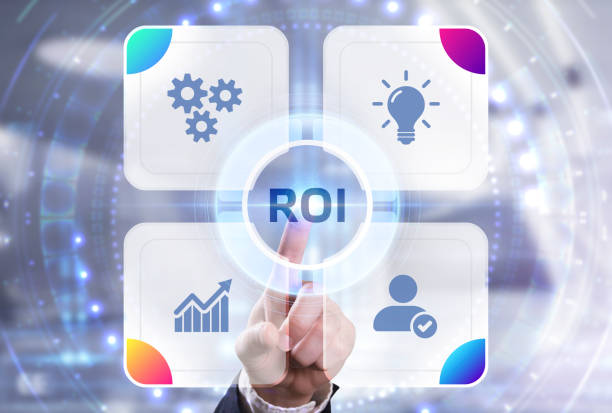
Images and other multimedia elements are an integral part of modern websites and play an important role in user experience.
However, if not properly optimized, they can slow down page loading speed and harm your site’s on-page SEO.
Optimizing images and media is not limited to reducing file sizes; it also includes actions that help search engines understand your visual content and rank in image search results.
This section is a specialized and guidance manual for optimizing visual elements.
Key steps in optimizing images for on-page SEO:
- Image Compression: Before uploading, reduce the size of images without significant loss of quality.
Tools like TinyPNG or Compressor.io can be helpful in this regard. - Choosing the Right Format: Formats like WebP are highly optimized for the modern web, while JPEG is more suitable for photos and PNG for images with transparency.
- Alt Text: Write a descriptive and relevant alt text for each image that includes keywords.
This text is not only important for visually impaired individuals but also helps search engines understand the image content and strengthens your on-page SEO. - File Name: Use descriptive and keyword-rich names for image files (e.g., `sitemap-structure.jpg` instead of `IMG001.jpg`).
- Image Dimensions: Ensure image dimensions are appropriate for the space they occupy on the page and avoid uploading images with dimensions much larger than needed.
Optimizing videos also includes using CDN, compression, and adding transcripts or subtitles.
By taking these steps, you not only increase your site’s speed but also have a better chance of appearing in image and video searches, which directly contributes to improving your on-page SEO.
Is your online sales not as expected? With Rasaweb, solve the problem of low sales and poor user experience forever!
✅ Increase visitor-to-customer conversion rate
✅ Create a pleasant user experience and boost customer trust
⚡ Act now to receive a free consultation!
Site Speed and On-Page SEO; An Unbreakable Link
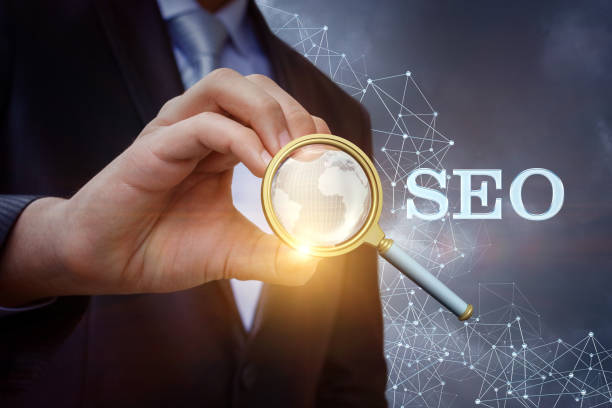
Site loading speed is one of the most important ranking factors in Google’s algorithms and has a direct impact on on-page SEO and user experience.
In today’s world, where users expect high speed from websites, every second of loading delay can lead to an increased bounce rate and loss of visitors.
Google consistently emphasizes the importance of site loading speed and has included it as part of its Core Web Vitals metrics.
This section analytically analyzes and explains how site speed affects on-page SEO and ways to improve it.
Reasons for the importance of site speed for on-page SEO:
- User Experience (UX): Users abandon slow websites.
A fast site increases user satisfaction and makes them more likely to return. - Crawl Rate: Search engines prefer to crawl faster sites.
Slow sites may be crawled less frequently, and their new content may be indexed later. - Bounce Rate: Slow loading speed directly increases the bounce rate, indicating a poor user experience and harming on-page SEO.
- Direct Ranking: Site speed is a direct ranking factor.
Ways to improve site speed for on-page SEO:
- Optimizing Images and Videos: As mentioned earlier, reducing size and using appropriate formats for media.
- Using Caching: Enabling browser caching to store static site elements.
- GZIP Compression: Compressing HTML, CSS, and JavaScript files.
- Reducing HTTP Requests: Merging CSS and JS files and reducing the number of page elements.
- Using CDN (Content Delivery Network): To serve content from the server closest to the user.
- Removing Unnecessary Plugins: Extra plugins can put a heavy load on the server.
By investing in site speed, you not only improve your on-page SEO but also create a pleasant experience for your users, ultimately leading to increased traffic and conversions.
URL Structure and Information Architecture in On-Page SEO
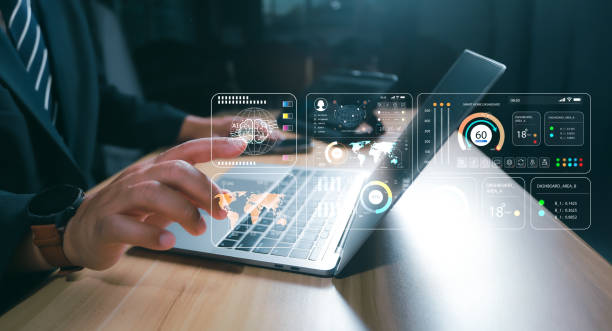
Website URL structure and information architecture are two important and often overlooked factors in on-page SEO that significantly impact search engine understanding and user experience.
A logical and hierarchical URL structure not only helps users understand their location on the site but also allows Google bots to easily crawl and index your pages.
Information architecture refers to how content is organized and labeled within a website and is crucial for easy navigation and content discovery.
This section, in an educational and specialized manner, examines these important aspects of on-page SEO.
Principles of URL optimization for on-page SEO:
- Descriptive and Readable: URLs should be short, descriptive, and include the page’s main keywords.
For example: `yourdomain.com/blog/seo-on-page-guide` is better than `yourdomain.com/p?id=123`. - Using Hyphens: Use hyphens to separate words in URLs, not underscores or spaces.
- Removing Extra Characters: Avoid special characters, uppercase letters, and unnecessary numbers in your URL.
- Hierarchical Structure: URLs should have a logical structure indicating the page’s hierarchy within the site.
Information Architecture and On-Page SEO:
- Clear Navigation: Navigation menus should be clear and logical so that users and search engines can easily access all important sections of the site.
- Silo Structure: Group related content into logical categories and subcategories to clarify the main topic of each site section.
- XML Sitemap: An XML sitemap helps search engines discover and index all your site’s pages.
- Internal Linking: As will be explained in the next section, proper internal linking is a crucial part of information architecture and helps distribute on-page SEO value across the entire site.
By carefully planning your site’s URL structure and information architecture, you not only improve user experience but also facilitate the crawling and indexing process for search engines, which results in strengthened on-page SEO and ultimately better rankings.
The Importance of Internal Linking and Improving On-Page SEO
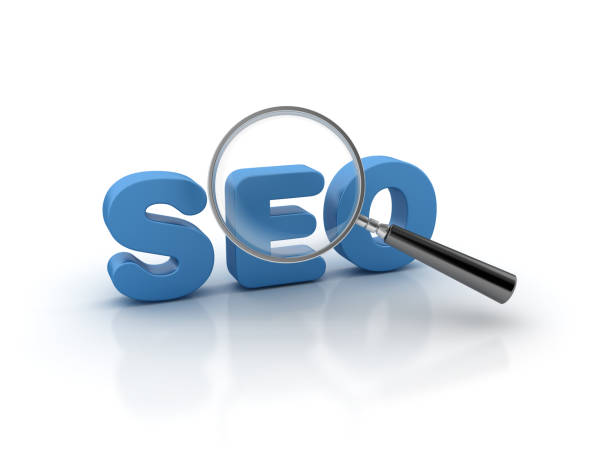
Internal linking is one of the most powerful on-page SEO tools, often overlooked.
Internal links are links that point from one page on your domain to another page on the same domain.
These links play a vital role in distributing PageRank (SEO value) throughout your website, helping search engines discover new pages, and understanding the thematic relationship between different pages.
Furthermore, strong internal linking improves user experience by providing clear navigation paths and relevant content discovery.
This section offers a guidance and analytical approach to optimally using internal links in on-page SEO.
Why is internal linking important for on-page SEO?
- Credibility Transfer: Internal links help transfer credibility and PageRank from powerful pages to other pages.
- Content Discovery: They allow search engines to find and index new and deeper pages on your site.
- Understanding Site Structure: They help Google better understand the hierarchy and thematic relationship between your pages.
- Improving User Experience: They guide users to relevant content and increase their dwell time on the site.
Important tips for effective internal linking:
- Using Relevant and Descriptive Anchor Texts: Instead of “click here”, use phrases that explain the topic of the destination page (e.g., “on-page SEO optimization”).
- Linking to Important Pages: Link from high-authority pages to important pages you want to rank.
- Contextual Links: Place links naturally within the content text so they are meaningful to users and search engines.
- Avoiding Excessive Linking: The number of links on each page should be logical and purposeful.
A smart internal linking strategy can significantly help improve your site’s on-page SEO and drive more organic traffic to your pages.
The table below shows types of anchor text and their application in on-page SEO:
| Anchor Text Type | Description | Example |
|---|---|---|
| Exact Match Keywords | Using the exact main keyword of the destination page | “On-page SEO” |
| Partial Match Keywords | Using part of the keyword or a related phrase | “SEO Tutorial” |
| Brand | Your brand name | “Our Blog” |
| Generic | General phrases without a keyword | “Read Here” |
Title Tag and Meta Description; Important On-Page SEO Inputs

The Title Tag and Meta Description are the first elements users see on the Search Engine Results Page (SERP).
These two elements play a vital role in attracting clicks and increasing the CTR (Click-Through Rate) and are considered very important factors in on-page SEO.
Although the meta description is not a direct ranking factor, an attractive meta description can draw more users to your site, and this increase in traffic indirectly positively affects your on-page SEO ranking.
This section, in a specialized and explanatory manner, discusses how to optimize these elements.
Key tips for optimizing the title tag:
- Include Primary Keywords: Place the page’s main keyword at the beginning of the title tag.
- Appropriate Length: The title tag length should be around 50-60 characters to be fully displayed in the SERP.
- Appealing and Descriptive: The title should tell users what the page is about and encourage them to click.
- Unique for Each Page: Each page on your site should have a unique title tag.
Key tips for optimizing the meta description:
- Include Relevant Keywords: Naturally embed keywords in your meta description.
Google bolds these words in search results. - Appropriate Length: Usually around 150-160 characters is suitable for full display.
- Call to Action: Encourage users to click.
Phrases like “Read more,” “Discover now” can be effective. - Appealing Summary: Provide a concise and captivating description of the page’s content.
- Unique for Each Page: Like the title tag, each page should have its own specific meta description to help improve on-page SEO.
By carefully optimizing the title tag and meta description, you not only help search engines better understand your content but also guide more users from the SERP to your website, which directly leads to improved on-page SEO ranking and organic traffic.
Tired of your e-commerce website not generating as much revenue as it could? Rasaweb, specializing in professional e-commerce website design, solves this problem forever!
✅ Increase sales and revenue
✅ High loading speed and unparalleled user experience
⚡ Get a free e-commerce website design consultation
User Experience (UX) and Core Web Vitals; New On-Page SEO Metrics

In recent years, Google has increasingly emphasized the importance of User Experience (UX) as a crucial ranking factor.
The Core Web Vitals metrics, introduced in 2021, are a set of factors related to the speed, interactivity, and visual stability of a page that directly impact on-page SEO.
These metrics include LCP (Largest Contentful Paint), FID (First Input Delay), and CLS (Cumulative Layout Shift).
Understanding and optimizing these metrics are essential for any website seeking to improve its ranking in search results.
This section is an analytical and thought-provoking discussion on how to adapt to these changes in on-page SEO.
Core Web Vitals and On-Page SEO:
- LCP (Largest Contentful Paint): The time it takes for the largest visual content on the page to render.
Delay in LCP can harm user experience and, consequently, on-page SEO. - FID (First Input Delay): The time between a user’s first interaction with the page (such as clicking a link) and when the browser is able to respond to that interaction.
High FID indicates an unresponsive site. - CLS (Cumulative Layout Shift): The extent of unexpected and sudden shifts in the page’s layout.
High CLS can cause user confusion and accidental clicks.
Why are these metrics vital for on-page SEO?
By positioning Core Web Vitals as ranking factors, Google is signaling to developers and SEOs that improving user experience is no longer an option, but a necessity.
If your website doesn’t meet these metrics, even with excellent content and strong links, it might fall behind in competition with sites that offer a better user experience.
Is merely adhering to these metrics sufficient to guarantee success in on-page SEO? Absolutely not, but it’s a significant step in the right direction.
To improve your Core Web Vitals and consequently your on-page SEO, special attention must be paid to optimizing code, images, fonts, and the overall page structure.
This optimization not only improves your rankings but also increases user satisfaction, which will ultimately lead to increased traffic and conversion rates in the long run.
Common On-Page SEO Errors and How to Fix Them
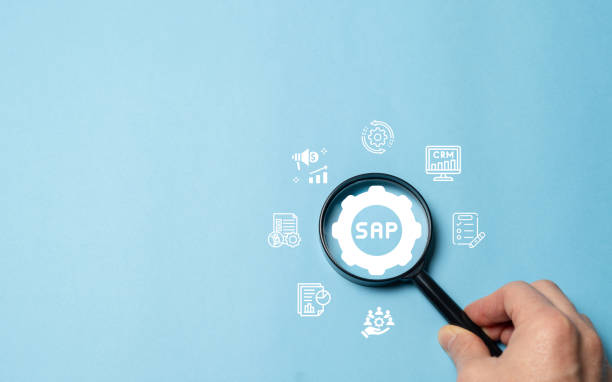
Despite the importance of on-page SEO, many websites make common mistakes that can render their optimization efforts ineffective.
Identifying and correcting these errors is essential for maintaining the health of your site’s SEO and achieving high rankings.
This section is an educational and guidance manual for identifying and fixing the most common on-page SEO errors.
Some common errors and their solutions:
- Duplicate Content:
One of the most serious problems harming on-page SEO is the presence of identical or very similar content on multiple pages of a site or even on other websites.
This problem can confuse search engines and reduce your site’s credibility.Solution: Use a Canonical tag to point to the original version of the content, delete or rewrite duplicate content, or use a 301 redirect.
- Slow Page Loading Speed:
As mentioned earlier, site speed is a key factor in on-page SEO.
Solution: Compress images and code, use caching, CDN, and optimize the server.
- Lack of Title Tag and Meta Description Optimization:
Weak or duplicate title tags and meta descriptions can reduce your click-through rate (CTR) and send negative signals to Google.
Solution: Create unique, engaging, and keyword-rich title tags and meta descriptions for each page.
- Broken Links:
Internal or external links pointing to a non-existent page (404) disrupt user experience and diminish SEO authority.
Solution: Use tools like Screaming Frog or Google Search Console to identify and fix broken links.
- Absence of XML Sitemap and Robots.txt File:
These files help search engines better crawl and index your site.
Solution: Create and submit an XML sitemap to Google Search Console and correctly configure the Robots.txt file.
By regularly monitoring and fixing these errors, you can ensure that your site’s on-page SEO is in the best possible state and leverage its full potential to attract traffic.
Frequently Asked Questions
| No. | Question | Answer |
|---|---|---|
| 1 | What is On-Page SEO? | On-page SEO refers to a set of actions performed within a website to optimize its pages and achieve better rankings in search results. |
| 2 | What is the most important factor in on-page SEO? | High-quality, relevant, and comprehensive content that meets user needs is the most important factor in on-page SEO. |
| 3 | What role does the Title Tag play in on-page SEO? | The title tag is one of the most important factors that tells search engines and users what the page content is about. It should include the main keyword and be engaging. |
| 4 | How important is the Meta Description tag? | Although it does not directly affect rankings, it is very effective on the click-through rate (CTR) in search results and encourages users to visit the page. |
| 5 | How is image optimization done in on-page SEO? | By using appropriate alt tags, compressing image size to increase loading speed, and meaningfully naming the image file. |
| 6 | What is the importance of using headings (H1, H2, H3) in on-page SEO? | Headings help structure content, improve readability, and assist search engines in understanding the hierarchy and sub-topics of the content. |
| 7 | What is Internal Linking and what are its benefits? | Internal linking refers to creating links between different pages of a website. This helps distribute authority, improve user navigation, and assist search engine crawling. |
| 8 | Where should the Focus Keyword be placed on the page? | The main keyword should be placed in the title tag, meta description, H1, first paragraph, and naturally throughout the text, and if possible, in the URL. |
| 9 | What effect does duplicate content have on on-page SEO? | Duplicate content can harm a site’s ranking and confuse search engines as to which version is original, potentially leading them to classify it as spam. |
| 10 | How important is page loading speed in on-page SEO? | Page loading speed is an important ranking factor and directly affects user experience. Slow pages lead to an increased bounce rate. |
And other services of Rasaweb Advertising Agency in the field of advertising
Smart Direct Marketing: An innovative platform for improving digital branding by customizing user experience.
Smart Social Media: An effective tool for user engagement with the help of Google Ads management.
Smart Advertising Campaign: A new service to increase website traffic through optimizing key pages.
Smart Conversion Rate Optimization: Designed for businesses seeking online growth through user experience customization.
Smart UI/UX: Transform sales growth with the help of marketing automation.
And over hundreds of other services in the field of internet advertising, advertising consulting, and organizational solutions
Internet Advertising | Advertising Strategy | Advertorial
Sources
Complete Guide to On-Page SEO on Virgool
Fundamentals of On-Page SEO and On-Page Optimization
On-Page SEO Checklist for Ranking Improvement
On-Page SEO Strategies for Attracting Traffic
? With Rasaweb Afarin, the digital future of your business is in our hands. By providing comprehensive services in SEO, content marketing, and multilingual website design, we guarantee a powerful and impactful presence for you.
📍 Tehran, Mirdamad Street, next to Bank Markazi, Southern Kazeroon Alley, Ramin Alley, No. 6

